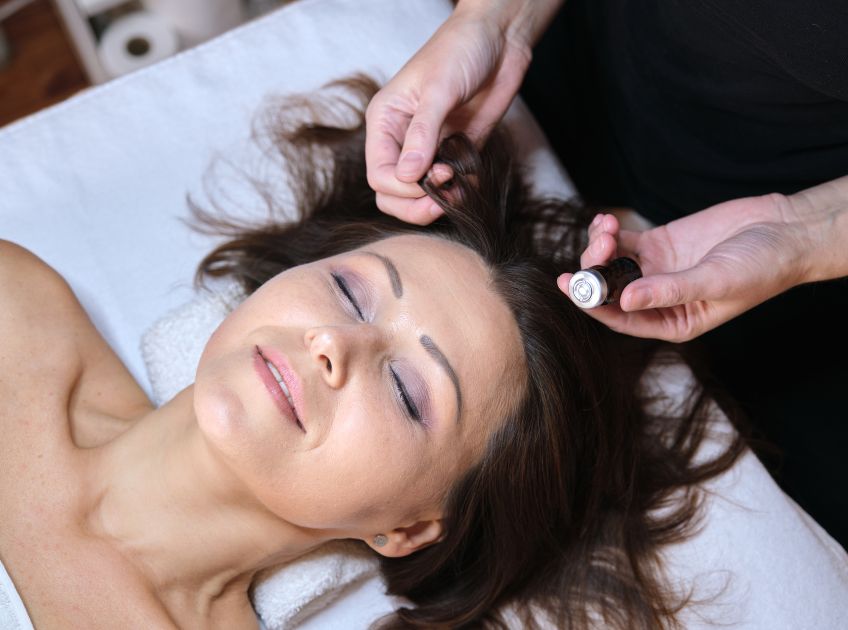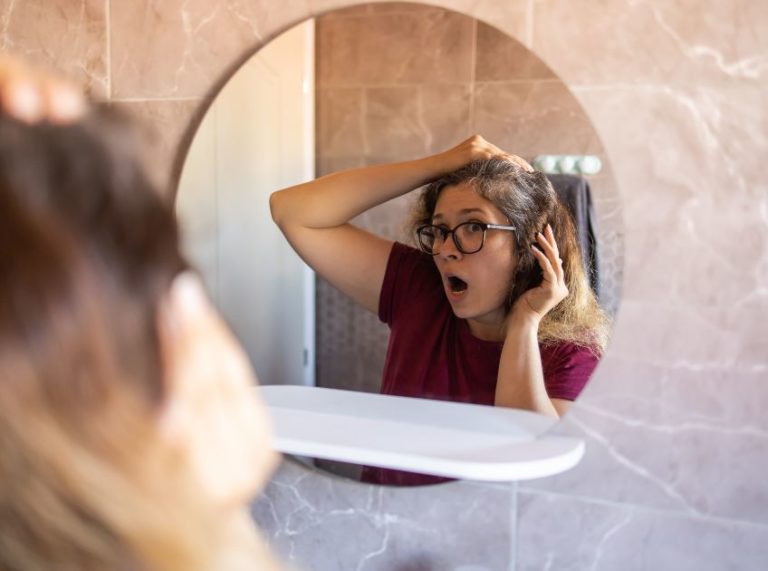
Important: This article is for informational purposes only. Please read our full disclaimer for more details.
Struggling with hair thinning, breakage, or a scalp that just won’t cooperate? This easy herbal remedy taps into the power of Ayurvedic ingredients combined with a moisture-locking base to revive your hair naturally. It’s time to embrace a clean, nourishing approach that helps your strands grow stronger, not just longer.
Why This Herbal Vaseline Is Worth a Spot in Your Routine
This isn’t just about hair growth—it’s about restoring your scalp environment and strengthening your strands at the root (1).
- Seals Moisture: Petroleum jelly creates a barrier that prevents moisture loss, especially helpful for dry climates.
- Nourishes Follicles: The mix of herbal powders and castor oil penetrates deeply to feed your hair from within.
- Protects Ends: Applying tips prevents split ends and breakage, especially for those with chemically treated or heat-damaged hair.
- Reduces Hair Fall: Strengthening the scalp naturally reduces breakage-related hair fall over time.
- Soothes Itchy, Dry Scalp: Brahmi and amla have calming, anti-inflammatory properties that help ease itchiness and dryness (2).
What Makes It Work? The Science Behind the Ingredients
Each ingredient in this DIY mix has a purpose rooted in tradition and supported by science.
- Petroleum Jelly (Vaseline): Though it doesn’t directly stimulate hair growth, it forms a barrier that locks in moisture and prevents breakage (3).
- Castor Oil: Rich in ricinoleic acid, castor oil supports healthy blood circulation to the scalp. A study in the Journal of Cosmetic Science found it can improve hair shaft health (4).
- Amla Powder: Amla (Indian gooseberry) is loaded with Vitamin C and antioxidants, promoting a healthier scalp and reducing oxidative stress that contributes to hair fall (5).
- Brahmi Powder: Known in Ayurveda to strengthen roots and reduce split ends; some studies support its calming effect on the scalp.
- Fenugreek Powder: Contains phytoestrogens and proteins that nourish hair follicles and improve texture.
Customize It for Your Hair
Not all scalps are created equal—here’s how you can tweak the formula:
- Oily Scalp: Reduce castor oil slightly and add a pinch of neem powder to prevent build-up.
- Dry Hair: Add 1 tsp of almond oil or increase brahmi by half a teaspoon.
- Sensitive Scalp: Use fewer herbal powders or infuse the oil with herbs rather than applying them in powder form.
Always start with a patch test when adding new ingredients.
What Hair Types Is This Best For?
This DIY herbal Vaseline works best for:
- Dry, brittle hair that breaks easily
- Frizzy, curly, or coily hair that needs more moisture
- Color-treated or heat-styled hair needs nourishment
- Hair prone to scalp dryness or dandruff
Avoid heavy application if you have a naturally oily scalp or fine, limp hair.
Is This Safe for Everyone?
In general, yes—but with a few guidelines:
- Choose unscented, skin-safe petroleum jelly
- Patch test herbal powders to avoid allergic reactions
- Avoid leaving the mixture on for more than 24 hours
- Wash thoroughly with a gentle, sulfate-free shampoo
This remedy is not recommended for infants, those with very active scalp acne, or people with petroleum sensitivity.
Know When to Stop Using It
Not every natural remedy suits everyone. Discontinue if:
- Your scalp becomes oily, itchy, or irritated
- You notice more hair falling after multiple uses
- You have trouble fully washing it out, and a buildup forms
Give it 4–6 weeks before evaluating results, and always adjust based on how your scalp feels.
DIY Herbal Vaseline Recipe for Hair Growth
A tried-and-true remedy that combines ancient wisdom with everyday ingredients.
Ingredients:
- 2 tablespoons petroleum jelly (unscented)
- 1 tablespoon castor oil
- 1 teaspoon amla powder
- 1 teaspoon brahmi powder
- 1 teaspoon fenugreek powder
- Optional: 3–5 drops rosemary essential oil (for added growth support)
Tools Needed:
- Heat-safe bowl
- Small whisk or spoon
- Clean glass container for storage
Directions:
- In a double boiler (or microwave-safe bowl), gently melt the petroleum jelly until it becomes liquid.
- Add castor oil and stir until the mixture is fully blended.
- Slowly add amla, brahmi, and fenugreek powders while stirring to prevent clumps.
- If using rosemary oil, stir it in once the mix cools slightly.
- Pour into a clean container. Let it set until solid at room temperature.
How to Use:
- Take a small amount and warm it between your fingers.
- Apply directly to the scalp, focusing on dry patches or areas with thinning.
- Massage gently for 5–10 minutes to stimulate blood flow.
- You can also apply to hair ends to prevent split ends.
- Leave on for 1–2 hours or overnight (use a shower cap), then wash with a gentle shampoo.
- Use once or twice a week.
Final Thoughts: Simple, Powerful, and Natural
Hair health doesn’t have to come from a bottle filled with hard-to-pronounce ingredients. This DIY herbal Vaseline is proof that your kitchen and your culture may already hold the answers you’re looking for. With regular use, care, and the right tweaks, this blend can be a game-changer for those seeking long-term hair nourishment. Be consistent, trust the process, and let nature do its work.















